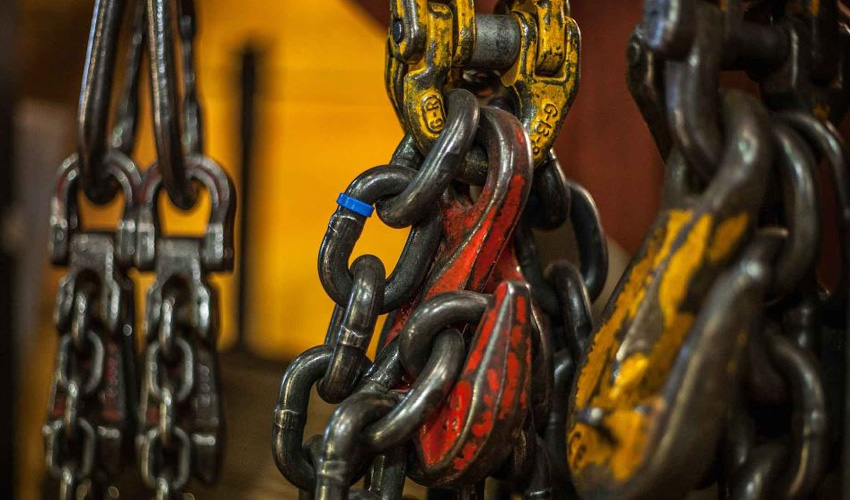
One essential safety practice in every workplace is performing routine maintenance to ensure all hardware is operating efficiently. When it comes to renting equipment that’s as useful and as dangerous as cranes, it’s even more important.
These five chain hoist maintenance tips from our crane company across Texas can help ensure safety and performance, without the need for crane repair service.
1.Clean and Lubricate the Chain
Debris and rust are the most common sources of chain wear. If there’s too much buildup of grit or rust, the chain can become difficult to move or stiff.
Depending on what your chain hoist is used for, you should dismantle it completely for cleaning and oiling once or twice a year.
2. Be Aware of Common Issues with Chain Hoists
It’s hard to maintain a piece of equipment without understanding how it works. If you do know what can happen, however, you’ll be more than capable of identifying when your equipment’s effectiveness is being affected by wear and tear.
All three kinds of chain hoists for crane equipment – hand chains, lever ratchets, and differentials, use some combination of a hook and a chain to lift or move heavy objects. Wear and tear can affect the ability for the chain to rotate, which is the source of many problems. Luckily, you can help extend your chain’s lifespan with regular maintenance.
3. Perform Regular Inspections
OSHA requires that certain inspections and tests be carried out on chain hoists on a regular basis.
Every day, the crane or hoist operator should perform a visual inspection of their equipment to ensure it is working properly.
Every month, a detailed inspection should be conducted, documenting damage to the equipment, as well as existing wear and tear.
4. Watch out for Damage
All chains get worn over time, and a chain that is overused will deteriorate beyond usefulness, into danger. Common signs a chain is damaged include:
- It ‘pops’ while it is in use
- It is too stiff
- There are kinks in the chain
- There are stretches in the chain
To avoid accidents, do not work with a damaged chain.
5. Perform all Necessary Testing
The chain and its hoist are two parts of the same tool. You should inspect the hoist and test it regularly to confirm it functions properly.
If you perform these tests, you will be confident that your hoist will operate under various conditions, and any performance-related issues will be made evident.
Every quarter, perform a service load test, observing how well your chain hoist functions when lifting various objects of different weights.
Twice a year, test the hoist’s ability to lift a heavy load.
Turn to Bobcat Contracting for Crane Repair & Rental Services From Our Crane Company Across Texas
For more than 25 years, Bobcat Contracting provides crane and rigging and heavy hauling for a variety of clients across Texas and Oklahoma. The crane equipment rental company offers free estimates, competitive pricing and reliable results. We’ve been the go-to contractor for heavy crane transport and lifting, with an industry-leading safety record.
